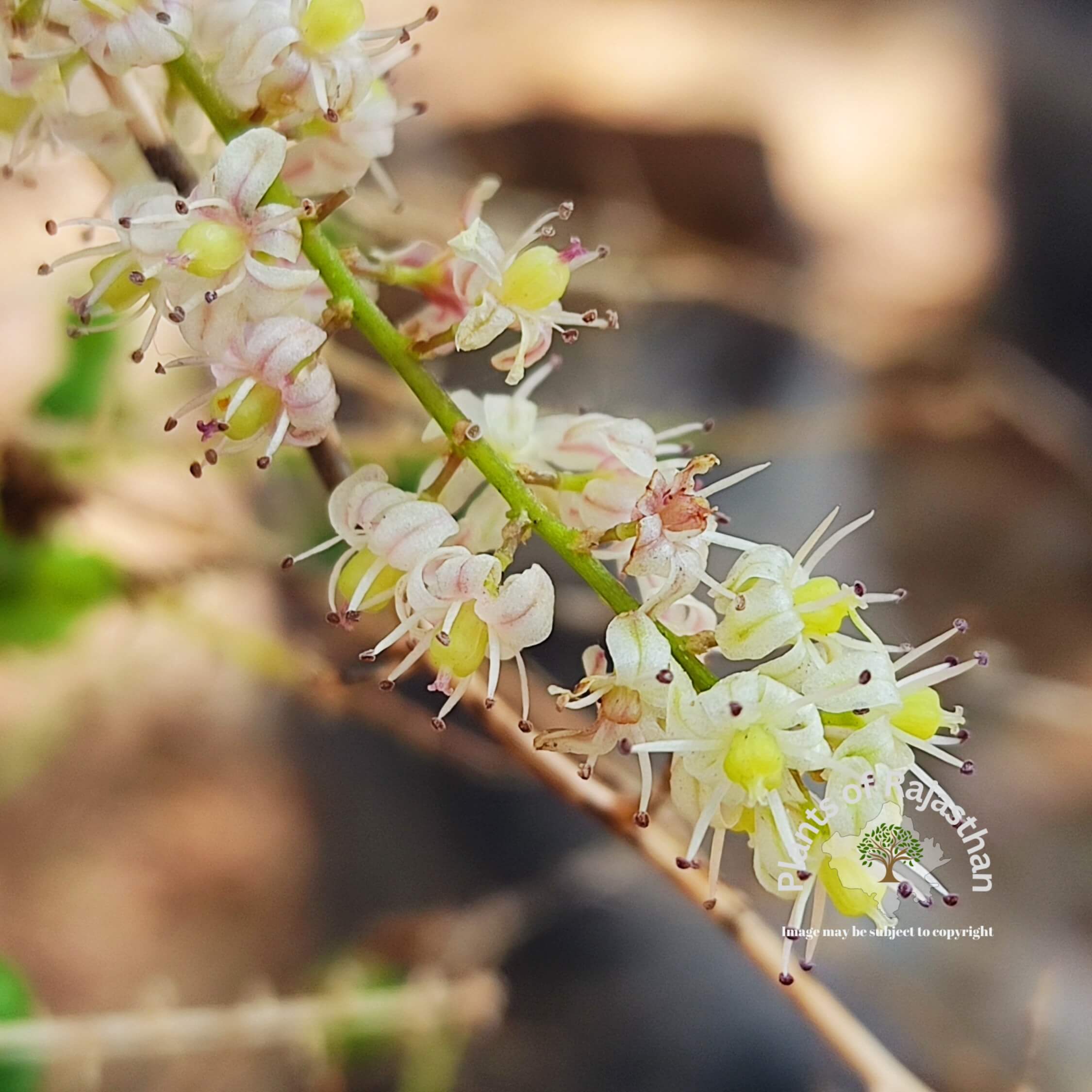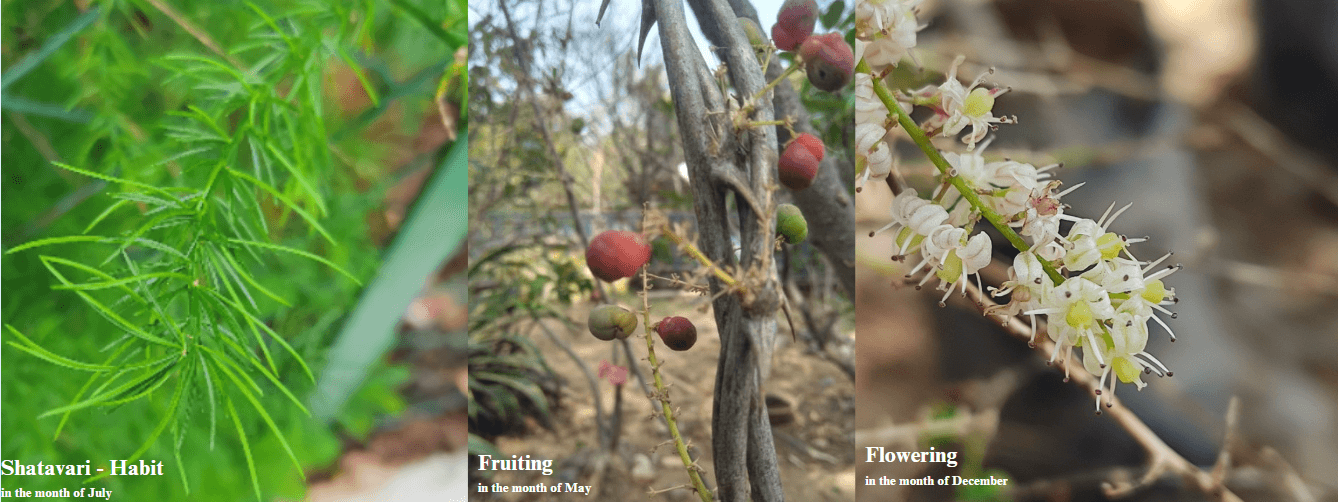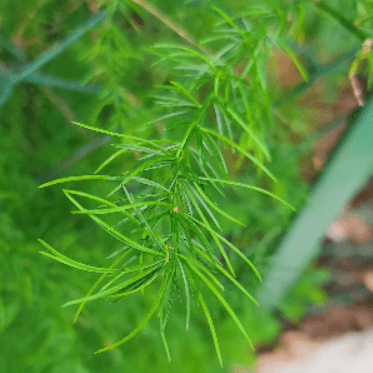IUCN Status
 : Not Applicable
: Not Applicable
Distribution Map
- Asparagopsis abyssinica, Asparagopsis acerosa, Asparagopsis brownei, Asparagopsis decaisnei.
- Naturally grown
-
A perennial climber. Leaf spur spinescent, spine sharp, straight, 1.3-2.0 cm on the main stem and 0.5-1.0 cm on branches. Inflorescence axillary, many flowered raceme or panicle up to 8 cm, flowers bisexual. Bracts 1mm, broadly ovate. Pedicel 2.5-3.5 mm, articulated in the middle. Tepals 8 x 1.5 mm, white. Stamens up to 2 mm, shorter than the perianth, anthers minute.
Flowering: Oct-Dec
Source: @eFloraofIndia, FoP, POWO
-

Asparagus racemosus- Racemose inflorescence -

Asparagus racemosus - Tuberous Roots
The plant possess tuberous rootstock with many fusiform, succulent roots. -

Asparagus racemosus Habit
Asparagus racemosus, also known as Shatavari, is a medicinal plant with many uses in traditional systems of medicine. The woody, ascending stem has tiny spines and is either brown or white-gray in hue. The plant blooms in Dec to March, filling the air with a subtle scent, and by the end of April, it bears beautiful red berries. Ayurveda, or traditional Indian medicine, uses the plant Asparagus racemosus; the root is used to manufacture medicine. India's low woodland regions are home to the climbing plant known as shatavari (Asparagus racemosus).

 Common Name: Satavari, शतावरी, सतावर, सतमूल, सतमूली, बहुमूला bahumula, अधरकंटिका adharkantika, सहस्त्रमूली sahastramuli, अहेरु aheru, बर bar, बहुपुत्री bahuputri, नारायणी narayani, पीवरी pivari, वरी vari, वातारि vatari
Common Name: Satavari, शतावरी, सतावर, सतमूल, सतमूली, बहुमूला bahumula, अधरकंटिका adharkantika, सहस्त्रमूली sahastramuli, अहेरु aheru, बर bar, बहुपुत्री bahuputri, नारायणी narayani, पीवरी pivari, वरी vari, वातारि vatari Genus: Asparagus
Genus: Asparagus Unripe Fruiting,
Unripe Fruiting,  Flowering
Flowering Fruit Ripening
Fruit Ripening Fruiting
Fruiting Bud Stage
Bud Stage